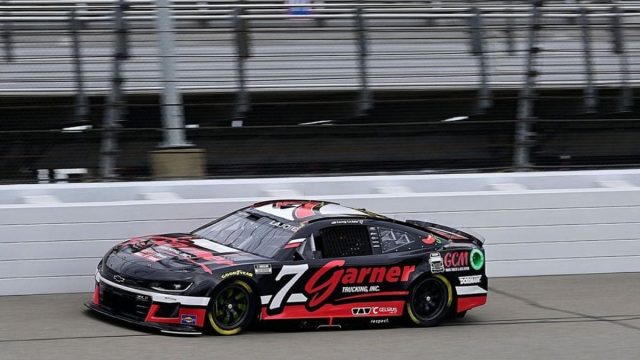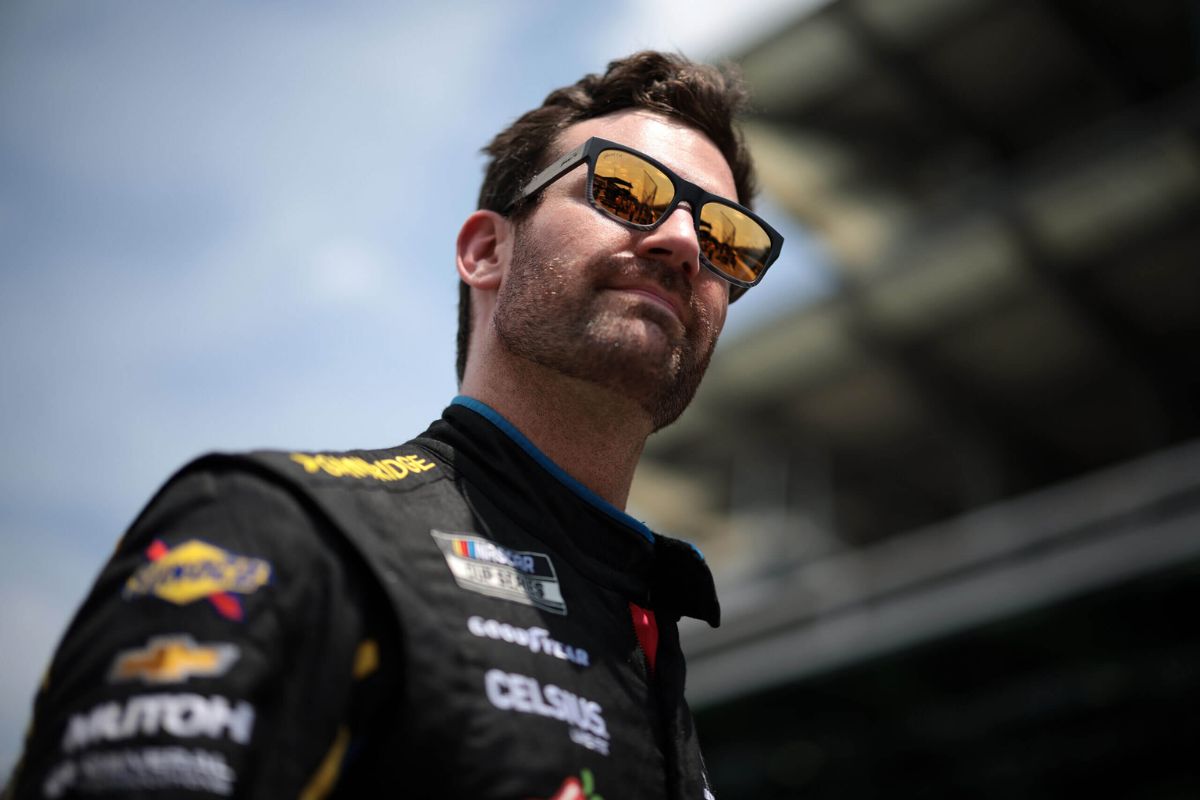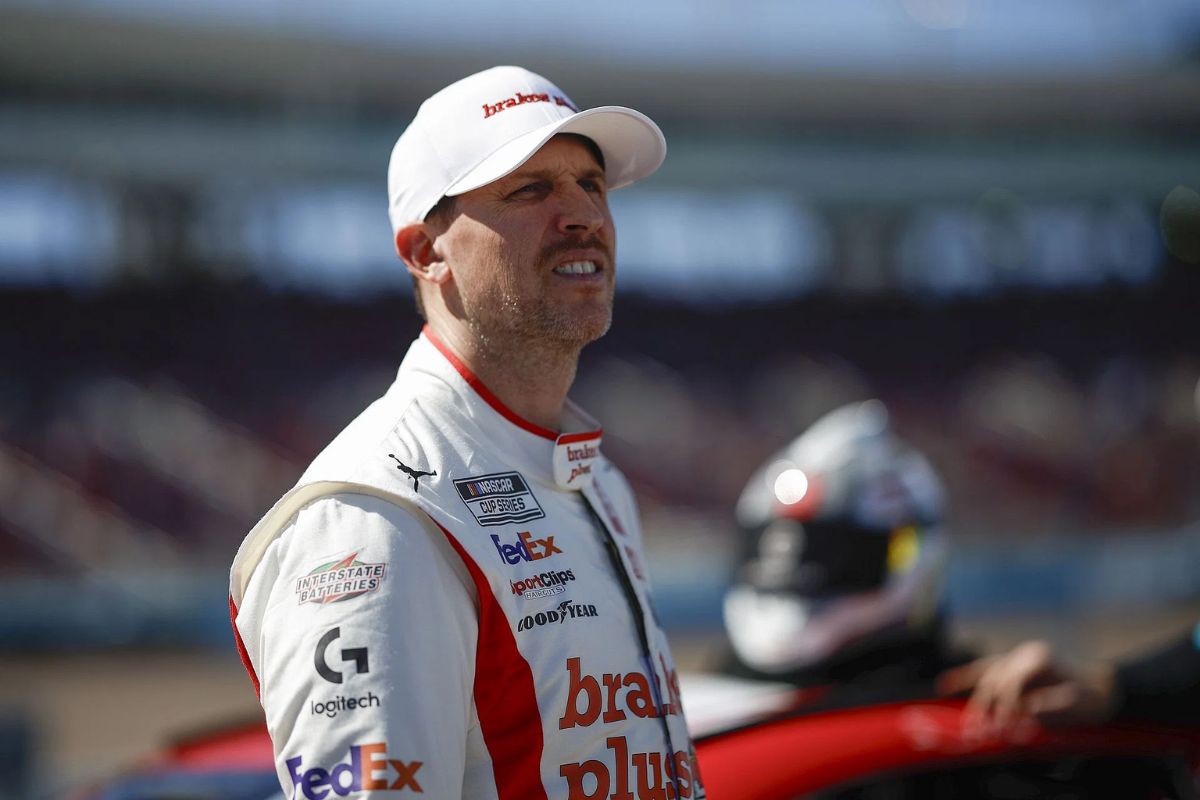Corey LaJoie’s Michigan Incident: The recent incident involving Corey LaJoie at Michigan International Speedway has ignited critical analysis surrounding the roles of drivers and their spotters, particularly focusing on Noah Gragson‘s involvement. Keselowski’s spotter highlighted the crucial importance of communication in high-stakes racing scenarios, suggesting that Gragson’s actions may have contributed to LaJoie’s precarious situation. This incident not only raises questions about driver accountability but also emphasizes the need for rigorous spotter training to improve decision-making under stress. As the racing community reflects on these events, the implications for future races and driver safety remain intriguing and complex.
Key Highlights
- Keselowski’s spotter emphasized the importance of communication between drivers, particularly regarding Gragson’s actions during the incident involving LaJoie.
- Gragson’s role in the incident was criticised , highlighting how small driver movements can lead to significant consequences on the track.
- The incident underscored the critical need for effective spotter training to enhance driver safety in high-pressure racing environments.
- Spotters play a vital role in preventing accidents by providing crucial information and guidance to drivers during races.
- The discussion surrounding Gragson’s involvement may influence future rule changes aimed at improving racing safety and driver decision-making.
Frightening Car Flip at Michigan International Speedway
In NASCAR, the specter of a car flipping over is a chilling reminder of the inherent dangers that accompany the thrill of the race. The recent events at Michigan International Speedway highlighted this reality as two vehicles were wrecked, ending up upside down within a mere two-day span. Such incidents not only evoke fear among fans but also ignite essential discussions regarding the safety measures in place for drivers.
The evolution of safety technology in NASCAR has made notable strides, yet the unpredictability of high-speed racing continues to pose substantial risks. When a car flips, the driver, often suspended in a weak position, relies on the structural integrity of their vehicle and the efficacy of safety protocols. The moments following such incidents are filled with tension, as spectators hold their breath, hoping for the best outcome.
Moreover, these alarming occurrences prompt calls for increased scrutiny of driver safety regulations and vehicle designs. The racing community must engage in a proactive dialogue, evaluating the effectiveness of current measures and exploring creative solutions.
As NASCAR navigates these challenges, it is essential to keep in mind that the thrilling nature of the sport must be balanced with the steadfast commitment to safeguard its participants.
In view of the recent flips, stakeholders are reminded that the thrill of the race should not come at the expense of driver safety, prompting an ongoing commitment to improvement in this perilous yet enchanting arena.
Community Reaction and Upcoming Daytona Race
Following the shocking incidents at Michigan International Speedway, the NASCAR community is abuzz with conversations about driver safety and the upcoming Daytona race. The heart-stopping flip of Corey LaJoie’s car has reignited discussions surrounding the effectiveness of safety measures, particularly the role of roof flaps, which failed to prevent such a dramatic incident.
As teams prepare for Daytona, the stakes have never been higher. Fans and analysts similarly are contemplating the implications of this incident on the upcoming race, where speeds and tight packs can lead to perilous situations.
As Daytona approaches, the NASCAR community is not only focused on competition but also on ensuring that such incidents do not overshadow the sport’s thrilling essence.
With an eye on innovation and safety, fans and teams similarly are set to witness how lessons learned from Michigan will inform strategies on this iconic track. The upcoming race promises to be a test of both skill and resilience in the face of adversity.
Door Bumper Clear Analyzes Corey LaJoie Incident
The recent incident involving Corey LaJoie at Michigan International Speedway has prompted a thorough examination by the team at Door Bumper Clear, focusing on the factors that contributed to the dangerous flip.
Analyzing the moments leading up to the crash, the team emphasized the complexity of racing dynamics, particularly the interactions between drivers when steering through tight packs.
Central to the discussion is the role of Noah Gragson, whose potential involvement in the incident has raised questions about the nature of his maneuvering. As LaJoie’s car made contact with Gragson’s, the investigatory lens from Door Bumper Clear questions whether Gragson’s actions unknowingly contributed to LaJoie’s loss of control.
The inquiry into this contact is not merely about assigning blame but understanding the mechanics of racing at high speeds, where split-second decisions can lead to catastrophic outcomes.
The analysis also includes a broader look at the responsibilities of spotters and drivers similarly, particularly in a sport where communication can mean the difference between safety and disaster.
As the community reflects on this incident, it is clear that the implications extend beyond LaJoie’s crash; they highlight the necessity for ongoing dialogue about driver interaction and safety protocols.
Ultimately, while LaJoie emerged from the wreck relatively unharmed, the incident serves as a clear reminder of the inherent risks in NASCAR, prompting calls for greater vigilance and tactical communication among all competitors on the track.
TJ Majors’ Perspective on the Crash
Understanding the intricacies of driver behavior in high-stakes racing environments is crucial, as highlighted by TJ Majors’ analysis of the Corey LaJoie incident. Majors, a seasoned spotter, provided valuable insights into the actions of Noah Gragson, suggesting that the movements on the track were rooted in instinctual reactions rather than deliberate intent.
“Noah moved down a tiny bit. I don’t know if it’s just a natural reaction from a guy; whenever somebody’s trying to sideline you, you naturally kind of chase him a little bit, I think. I don’t—I don’t think you can do that as a driver. I don’t think you can turn left, and if Noah can do this, he’s Superman.”-(tj)
Key points from Majors’ analysis include:
- The instinctual drive to counteract perceived threats on the track.
- The potential for a small movement to escalate into a major incident.
- The inherent danger when one driver attempts to push another off their line.
- The unpredictable nature of car control at high speeds.
- The necessity for drivers to maintain composure under stress.
Majors firmly stated that if a driver could consistently manipulate another’s path without consequence, they might as well be “Superman.” This emphasizes the complexity of racing tactics where split-second decisions can lead to disastrous outcomes.
The core of Majors’ commentary lies in the balance between instinctual reactions and the skills required to maintain control. In NASCAR, a moment of misjudgment can affect the individuals involved and reverberate throughout the race, influencing the outcomes for all competitors.
Denny Hamlin’s Analysis of the Flip
While discussing the incident involving Corey LaJoie, Denny Hamlin provided a compelling analysis of the factors contributing to the car’s dramatic flip. He emphasized that the dynamics of aerodynamics and wind played critical roles in the wreck. LaJoie, attempting to overtake Noah Gragson at high speed, faced an unexpected gust that lifted the front of his vehicle off the ground.
“When the car turns sideways, it’s got 30 extra miles per hour. If there’s a gust or sustained wind, it makes his car believe that he’s going 30 miles per hour faster than it’s actually going.”-(denny)
The following table demonstrates the key elements that contributed to this incident:
| Factor | Description | Impact on Incident |
|---|---|---|
| High Speed | LaJoie was traveling at considerable velocity. | Increased risk of loss of control. |
| Gust of Wind | A 30 mph wind from the northwest hit the car unexpectedly. | Lifted the car, causing the flip. |
| Draft and Aerodynamics | The aerodynamic effects intensified LaJoie’s speed perception. | Created instability leading to the crash. |
Later reports indicated that a 30 mph wind from the northwest caused the car to lose ground in turns 3 and 4.
Hamlin’s insights offer a deeper understanding of the incident, highlighting how external conditions can dramatically influence race outcomes. By analyzing LaJoie’s situation through the lens of physics and racing dynamics, he sheds light on the precarious nature of high-speed motorsports, where a split-second decision can lead to unforeseen consequences.
News in Brief: Corey LaJoie’s Michigan Incident
The incident involving Corey LaJoie at Michigan International Speedway emphasizes the crucial importance of communication and decision-making in high-stakes racing environments. The criticism of Noah Gragson’s actions highlights the profound impact that split-second choices can have on race outcomes and driver safety. Improved training for spotters and a focus on effective teamwork may be essential in preventing similar occurrences in the future. Ultimately, this incident serves as a striking reminder of the inherent risks present in motorsport.
ALSO READ: Corey LaJoie Shares Terrifying Moments of Michigan Crash: “Oh Sh*t, I’m Flying”



